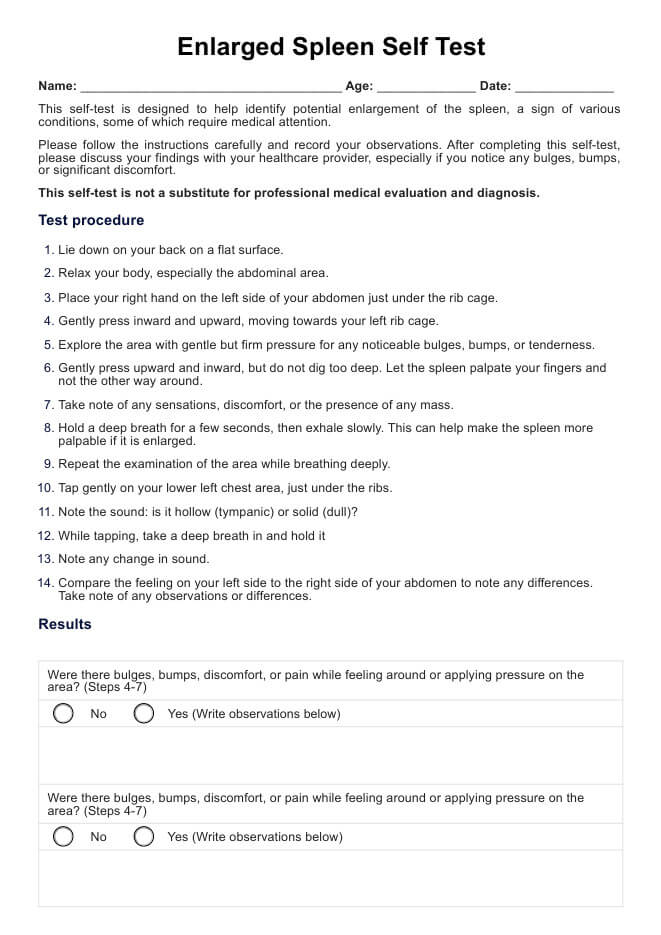To check for an enlarged spleen, perform a self-test by palpating under the left rib cage, using percussion techniques, and observing for any discomfort, bulges, or changes in sound.

Enlarged Spleen Self Test
Explore the Enlarged Spleen Self Test: a crucial tool for early detection and understanding of spleen health, enhancing patient self-awareness and care.
Use Template
Enlarged Spleen Self Test Template
Commonly asked questions
Reducing an enlarged spleen naturally involves addressing the underlying cause, such as managing infections or liver diseases, maintaining a healthy diet, and avoiding activities that strain the spleen.
The Middleton maneuver is a clinical technique for palpating the spleen, where the patient takes a deep breath while the doctor presses the left lower rib cage, checking for spleen enlargement.
EHR and practice management software
Get started for free
*No credit card required
Free
$0/usd
Unlimited clients
Telehealth
1GB of storage
Client portal text
Automated billing and online payments











